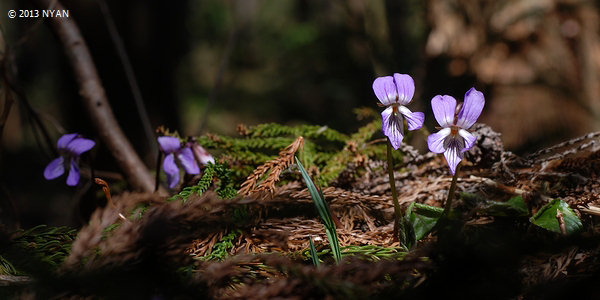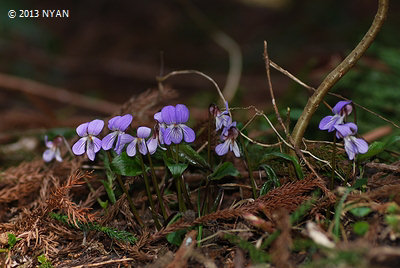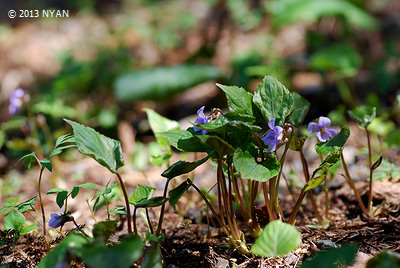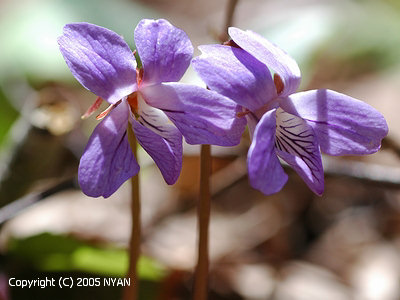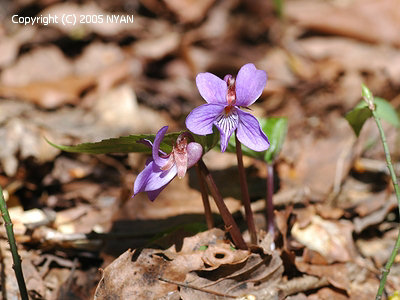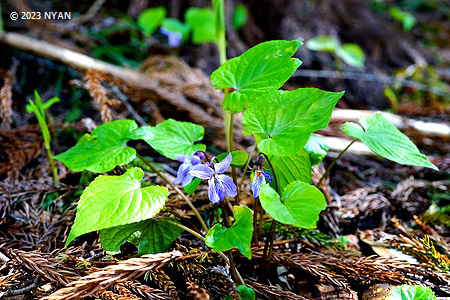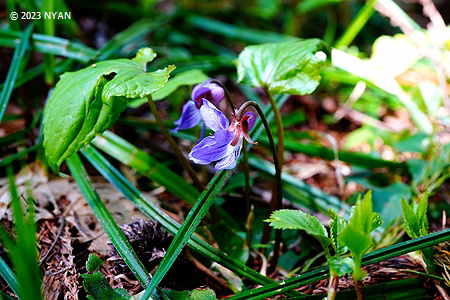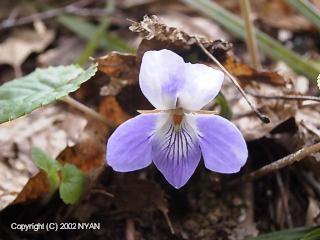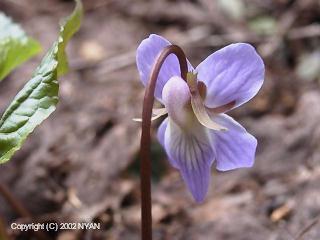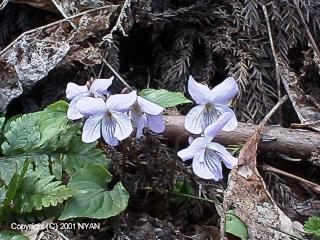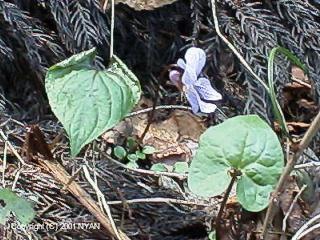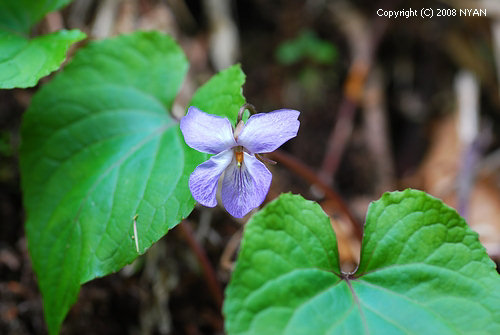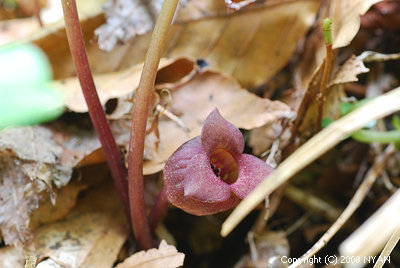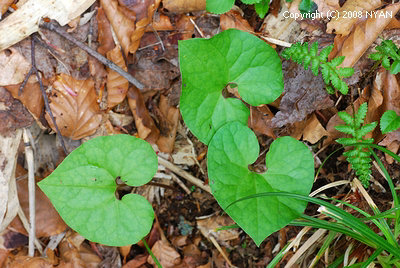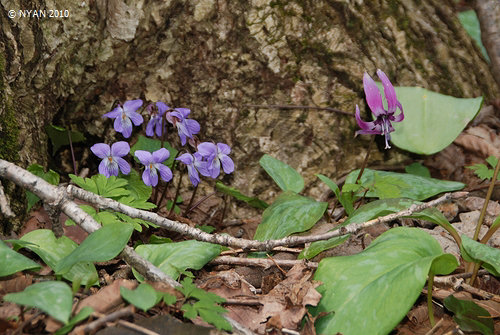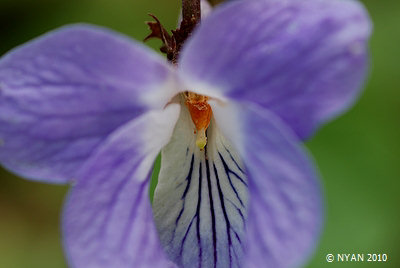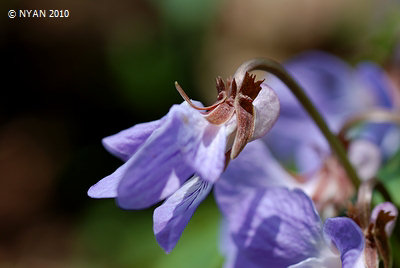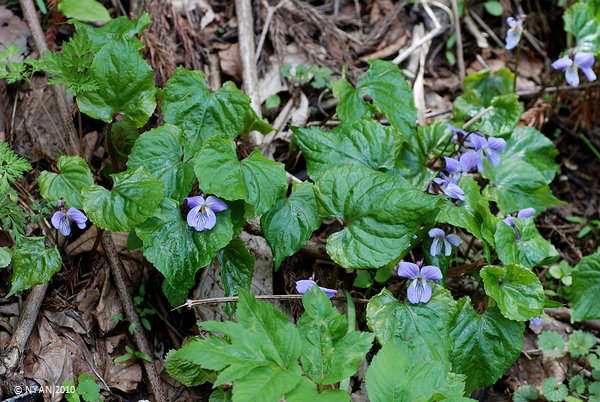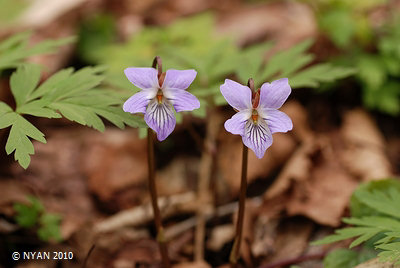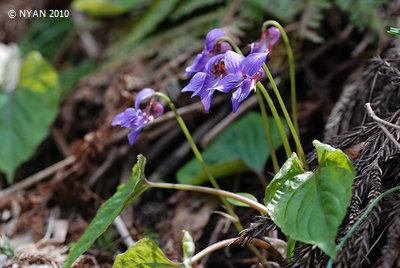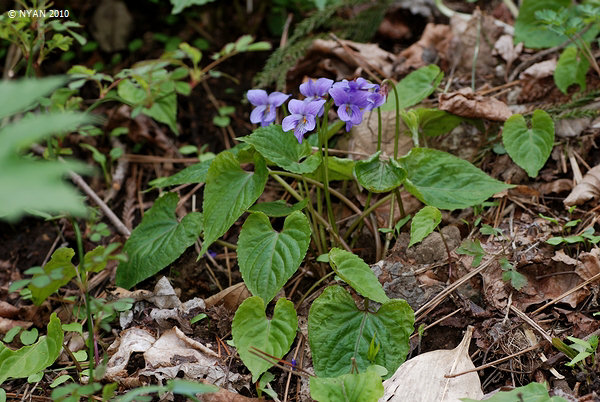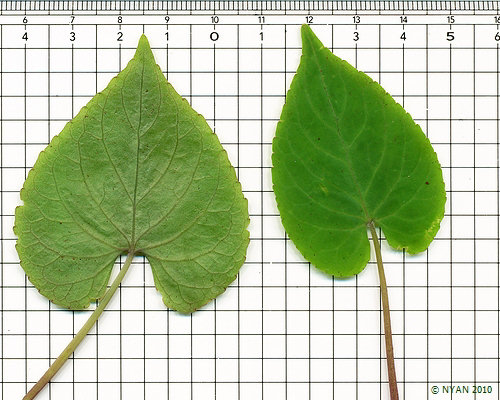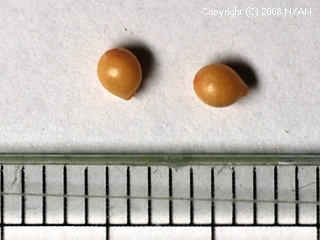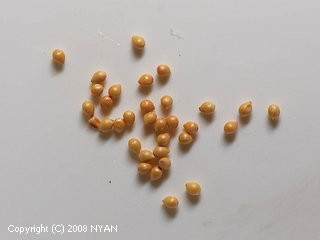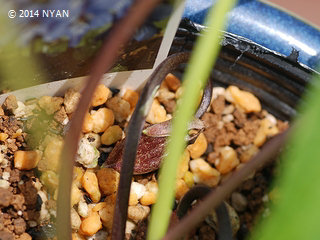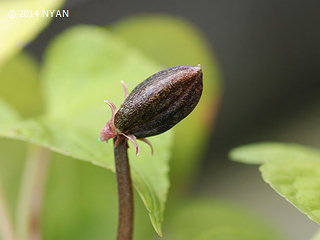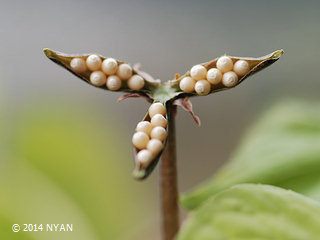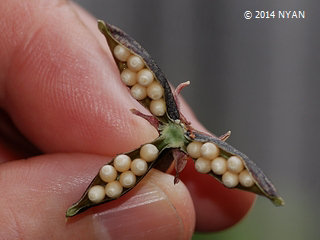| Section | Vaginatae W. Becker | |
|---|---|---|
| Scientific Name | Type species | Viola vaginata Maxim. : {Sumiresaisin}Published in: Bull. Acad. Imp. Sci. Saint-Petersbourg 23: 324 (1877) |
| Variety | Viola vaginata var. satomii F.Maek. et T.Hashim., nom. nud. : {San-in Sumire Saisin} Published in: Violets Jap.: 7 (1963) | |
| Form |
Viola vaginata f. albiflora Honda : {Sirobana Sumire Saisin} Published in: Nom. Pl. Jap. ed. emend.: 389 (1957)
Viola vaginata f. albescens Sugim. : {Usujiro Sumiresaisin} Published in: Keys Herb. Pl. Jap. 1: 355 & 736 (1965)
Viola vaginata f. purpureocalcarata H.Igarashi : {Otome Sumire Saisin} Published in: J. Jap. Bot.,75(3): 186 (2000)
|
|
| Synonym | ||
| Origin | vaginata : scabbard | |
| Common names | ||
| Stalk Form | The individual leaves and flowering stalks emerge directly from the rootstock. | |
| Habitat | It grows naturally a little darkly under the woods of the moisture taste about the mountainous district. | |
| Distribution | Japan domestic | Distributed over the Sea of Japan side fundamentally from the Hokkaido southwest part to Yamaguchi. |
| Japan overseas | Endemic species in Japan. | |
| Others | ||
| Flower | Shape | Large size. |
| Color | Soft image blue-purple flower. Generally the central part of the flower is white. | |
| Spur | Thick and short. | |
| Season | Early bloom, short term. | |
| Stigma | Inverted triangle. | |
| Aromatic | It has been reported that some individuals give off a weak fragrance and some are unscented. | |
| Others | The calyx appendage is large. | |
| Leaf | Shape | Cardiac type with which the point sharpened. It enlarges after the bloom. The saw teeth are rough. |
| Color | The surface is bright green. The back side is tinged with light purple. | |
| Others | It rolls from both ends during the flowering season and develops and thickens as it blooms. In summer, the leaves tend to die. | |
| Seed | Shape | Large grain. Teardrop shape (bulging oval). |
| Color | Ocher. | |
| Others | Seeds are few. Generally, the germination rate is low. The fruits are large, brown and spotted. | |
| Characteristics of roots | The taproot is white and thick. Mustache roots are few. The rhizome is also thick. | |
| Endangered Information | Aich:EndangeredⅠ、Tokushima:EndangeredⅠ、Yamaguci:EndangeredⅡ | |
| Type Specimen |
Viola vaginata : Hakodate in 1861
f. albiflora : Fukui (Echizen), in monte Takekurabe (T.Wakasugi 5, in 1946, TI).
f. albescens : Yamagata, Prov. Uzen (K.Kato, Hb. Sugim.)
|
|
| Chromosome Number | 2n=24 (Nishikawa, T., 1989, Journal of Hokkaido University of Education : Section IIB) | |
| Reference Information | ||
| Others | Viola vaginata grows in with the side of Japan Sea, Viola vaginata the inland area, Viola bisseti Pacific Ocean side. | |

